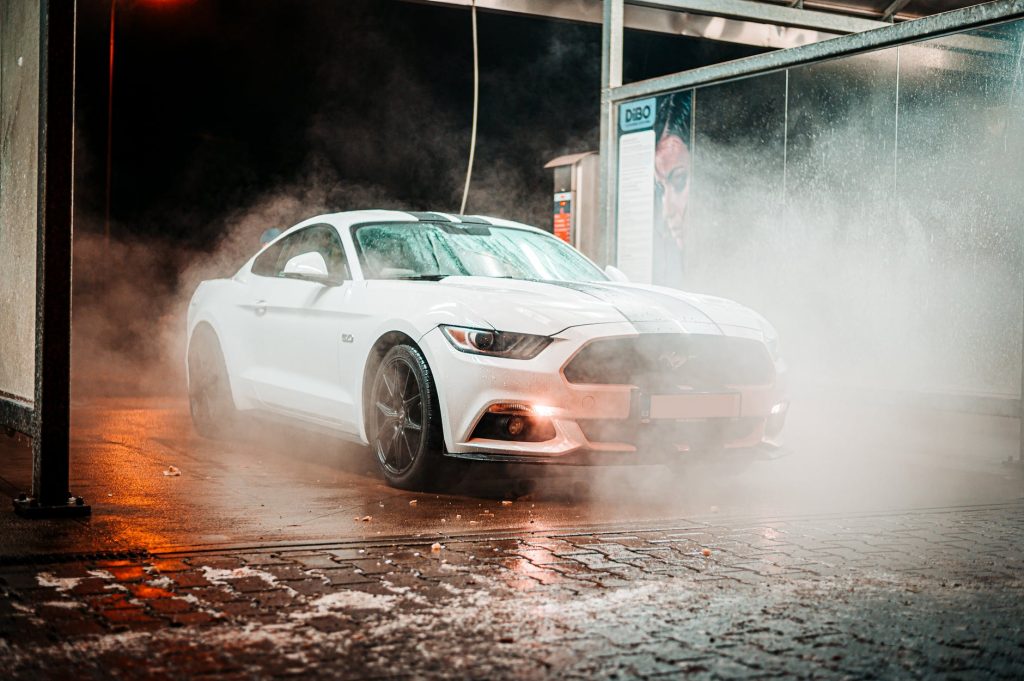Ever wonder what goes into the buffing solutions that give cars the shiny look they get every time they’re polished? In this article, we’re going to show how waxing, polishing, and compounding differ from each other and what you should be using when maintaining or cleaning your car.
What’s in Wax?
There’s only one type of wax relevant to the autodetailing world and that is carnauba wax. This wax is made from a plant wax that is also used in other items like candy, furniture polish, and surfboard waxes. This means it’s totally organic and is ultimately car-friendly. Carnauba wax helps keep candies glossy, that’s why it’s the best type of wax for automotive surfaces.
The chemical properties of carnauba wax helps it resist corrosion from salt water, as it has also been used to coat the underside of speedboats to increase speed and mobility.
Most car wash outlets like Brown Bear and Delta Sonic use car wax products that have carnauba wax to make cars look good as new.
What’s in Car Polish?
Although the terms car polish and car wax are used interchangeably, these two products are made for different purposes. Car wax gives a protective coating to a car, while car polish has microscopic abrasives that “redistribute” car paint to remove fine scratches.
Car polishes contain a substance called polydimethylsiloxane. It acts as an extremely “soft abrasive” under high pressure. That’s why car polish application needs to be done by hand or via a rotating cloth applicator, but it’s still up to debate whether a significant difference is found in manual vs automatic application. Regardless, car polish does its job of removing fine scratches from cars.
What’s in A Compounding Solution?
Last but not the least, compounding solutions. Compounding solutions are the coarser versions of car polish. They’re made to remove swirl and water marks, and make deeper scratches less noticeable.
A compounding solution looks like toothpaste, and this is because it’s a solution with extremely fine solid particles. Unlike car polish and car wax, post application of a compounding solution looks like chalk mixed with water. No wonder why some people are making DIY rubbing compounds at their home using chalk dust and water.
When To Use Wax, Polish, or Compounding Solutions?
Consider these things first prior to autodetailing:
- Does your car have dents and deep scratches?
- Does your car stay out in the sun for too long?
- Do you let your car dry out in the sun after raining?
- Do you offroad a lot?
These are some questions you might have to ask yourself prior to using anything on your car. Car wash veterans already know the answer to these, but for beginners, it’s better to make sure they know what they’re getting into.
- 1. Use wax if your car doesn’t have any visible damage or marks.
If there are no scratches or water marks on your car, and you just want it to look shiny, then waxing is the option. It provides a protective layer against moisture and other potentially damaging elements.
- 2. Use polish if you let your car out in rough weather conditions.
Believe it or not, water can scratch a car’s paint, not in the liquid form though. Snow in itself is not enough to damage car paint, but improper removal can cause scratches. That’s why a lot of people go for polish sessions in early spring.
In rare cases that cars get dented or keyed, compounding may not be enough to hide the damage, but damage close to those levels required stronger substances than polish or wax. It’s best left to professionals so a visit to your local auto detailing shop is the best choice.
